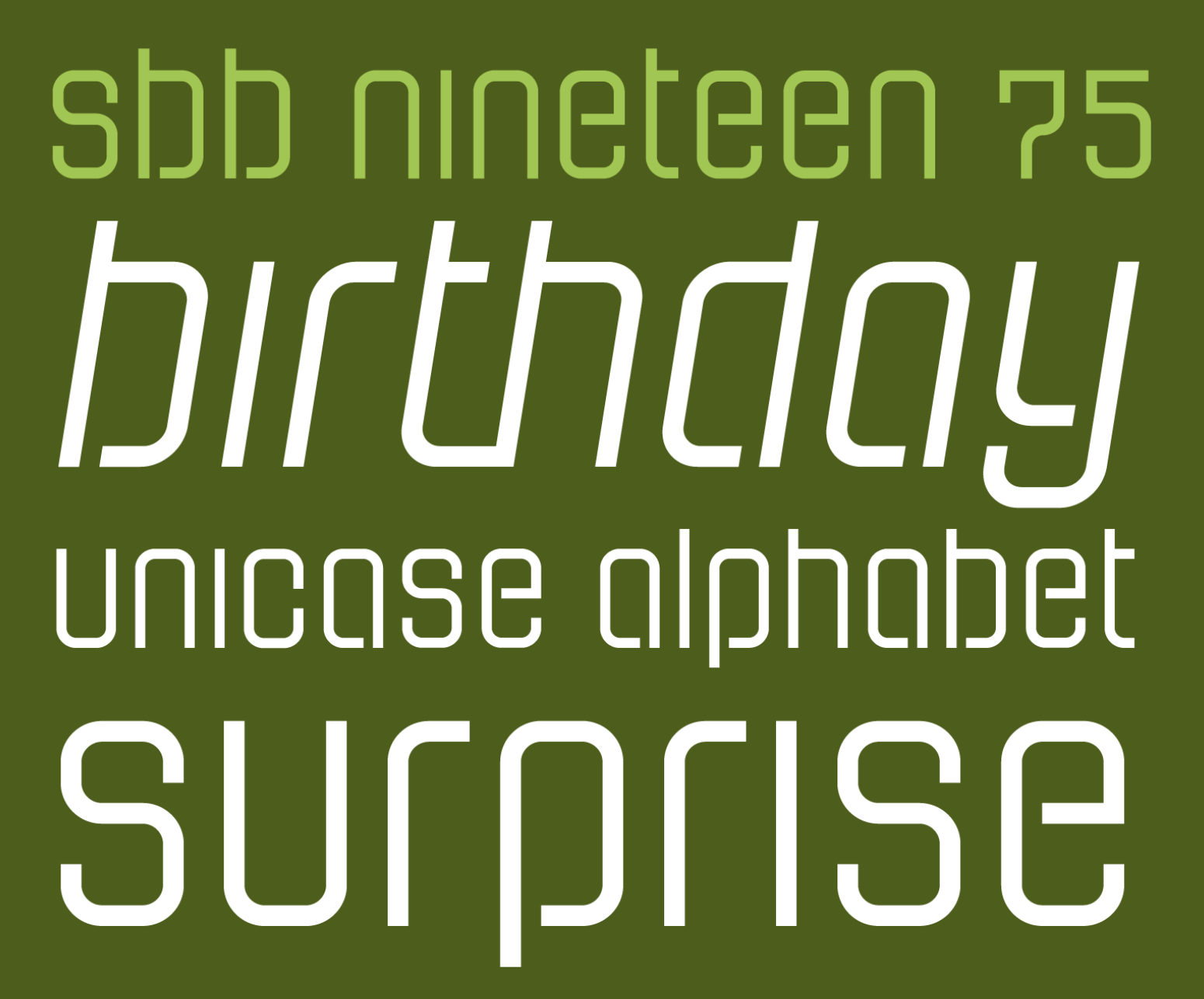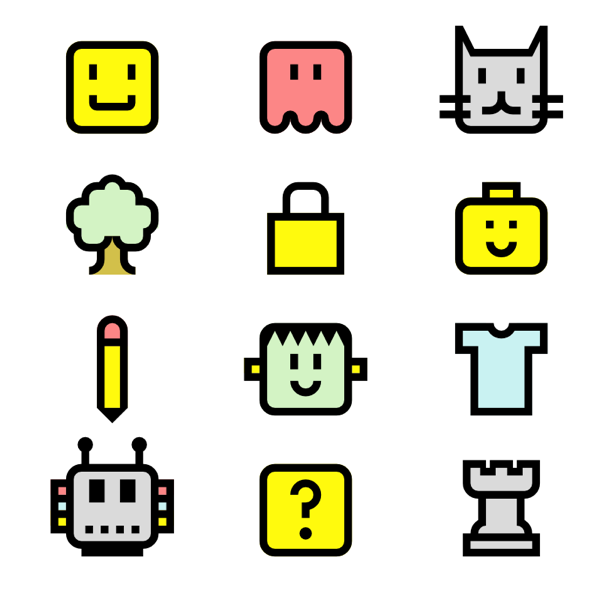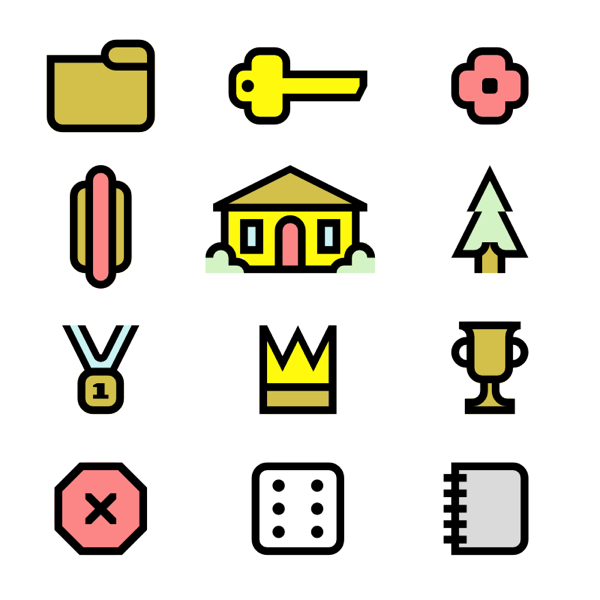Rian Hughes is one of my favorite type designers. This brief interview covering his 30 years of type design and promoting his Kickstarter was wonderful. (Also, I completely backed the Kickstarter!)
Posts in "Fonts"
I design fonts. I write about fonts. I love fonts.
Working on a new typeface design that I started six years ago.
Two new typefaces for my 50th birthday
Yesterday I turned fifty. And to celebrate, I released a typeface for free. SbB Nineteen 75 is a fun little faux-stencil display font that is available for free. I had also planned to release a commercial font, but the scheduled release on MyFonts hasn’t happened yet. SbB Certiphica is my blackletter-inspired font that you will soon be able to purchase at MyFonts.
UPDATE: SbB Certiphica is finally available on MyFonts.
SbB Nineteen 75
Many people won’t pay for fonts — even professional designers. There are so many typeface designs all over the web that you can find with a quick Google search. Many of them aren’t fully featured. Some are pirated. Software like Canva offers many excellent default options. Google Fonts and Adobe Fonts provide high quality options. So I understand why people hesitate to pay for quality type. There is, however, a vast marketplace of unique designs out...
In honor of my 50th birthday today, I decided to release a free font: SbB Nineteen 75.

Setting prices for type
Years ago when I started selling my typefaces, my goal was to keep prices low. At the time, the prevailing wisdom on MyFonts was to set prices insanely high, then run massive promotions to lower the price to something reasonable. That seemed wrong to me. I just wanted to set the prices low to keep my typefaces affordable. Over the last decade or so, the situation has changed. MyFonts recommends that a single font start at $20. Apparently, if I set my prices too low, MyFonts won’t promote them. Subscription services are further complicating the pricing structure.
Setting prices for any artist is challenging, but I’ve noticed over time that most artists initially set their prices too low. I think I’ve fallen into that trap. I’m working on a new release right now1 and I’ve decided that I need to finally shift my pricing strategy. On August...
SbB Emote: A colorful faux emoji set built in Fontstruct
I mentioned a couple of days ago that I was playing around with some new-to-me features and bricks in Fontstruct. After I finished SbB Roundabout1, I decided those techniques would work really well on a symbol font. So I started playing around with building a couple of little faux emoji. Then decided that I needed to add some color. And before long, I’ve built an adorable set of icons in Fontstruct… SbB Emote.

I don’t know which my favorite is – either the robot or the minifig-inspired smiley. “Happy Frankenstein” is a classic, too. In total, the set has 63 glyphs. The build used over 140 different blocks and 6 colors. It’s probably the most complex Fontstruction I’ve made, since I normally like to keep it really simple.
 Continue Reading →
Continue Reading →
Embracing old tools in new ways + two new Fontstruct designs
Recently, I started playing around on Fontstruct again. The tool has evolved massively in the 17 years I’ve used it, but I interacted with it largely the same way — placing blocks on grids. I’ve been thinking about how I use design tools lately. I use apps like Photoshop and InDesign the same way I used them a decade ago. In general, this works fine, but I don’t really take full advantage of the advancements in the software. I’ve been trying to explore new features in Photoshop and Glyphs lately, and I decided I wanted to try out some of the features I haven’t used in Fontstruct, too. I just made two designs public: SbB Vertica and SbB Roundabout.
SbB Vertica. A bold all-caps display font consisting of vertical bands. I used the brick size and grid spacing filters to create the banding effect through the letters. To get...
There is no better feeling than coming up with the perfect name for your typeface… and discovering it is actually unused.
Sixteen years ago today, I shared my first Fontstruction… Big Thursday and it was selected as a Top Pick. Fontstruct has improved as a tool so much since those early days, but it’s still every bit as fun to play around with.
(Oh, and back then, the editor was built in Flash!)
Some creations are foundational. If you design a typeface, other people create things using that font. Photographers and illustrators create works of art that can be incorporated into other designs. Brand design crafts visual and verbal foundations that others can build on. These days, I’m much more interested in these foundational creations than I am designing ads or billboards.